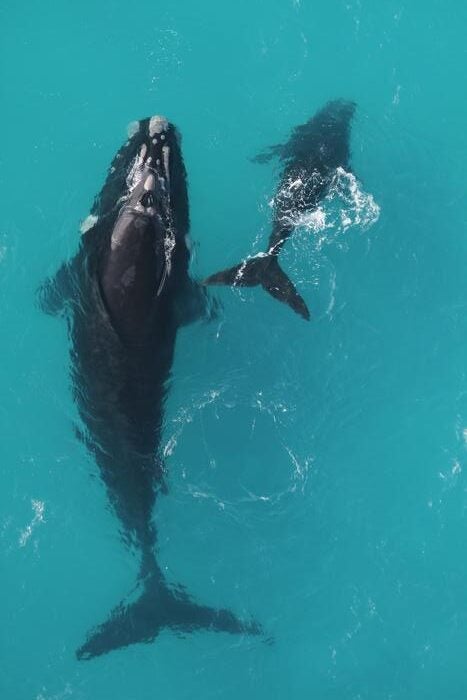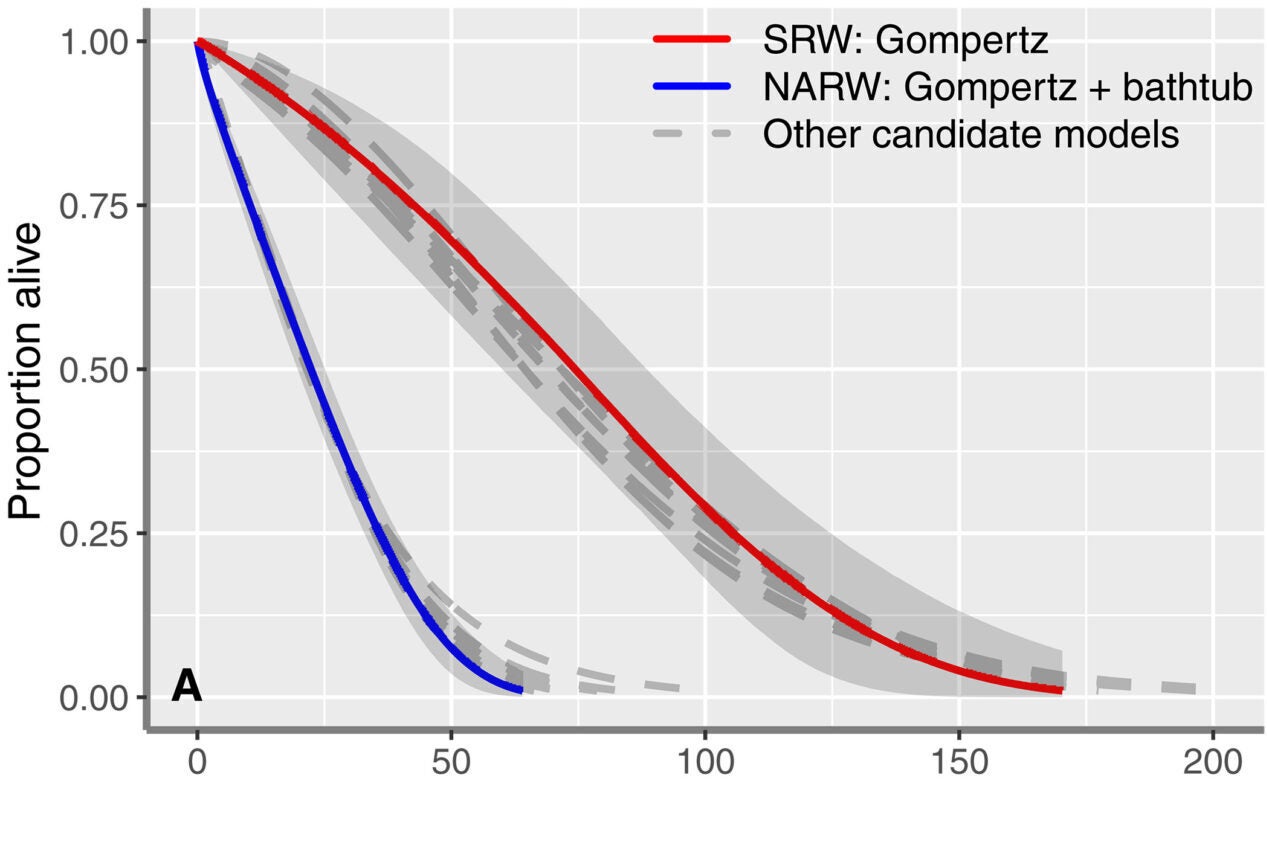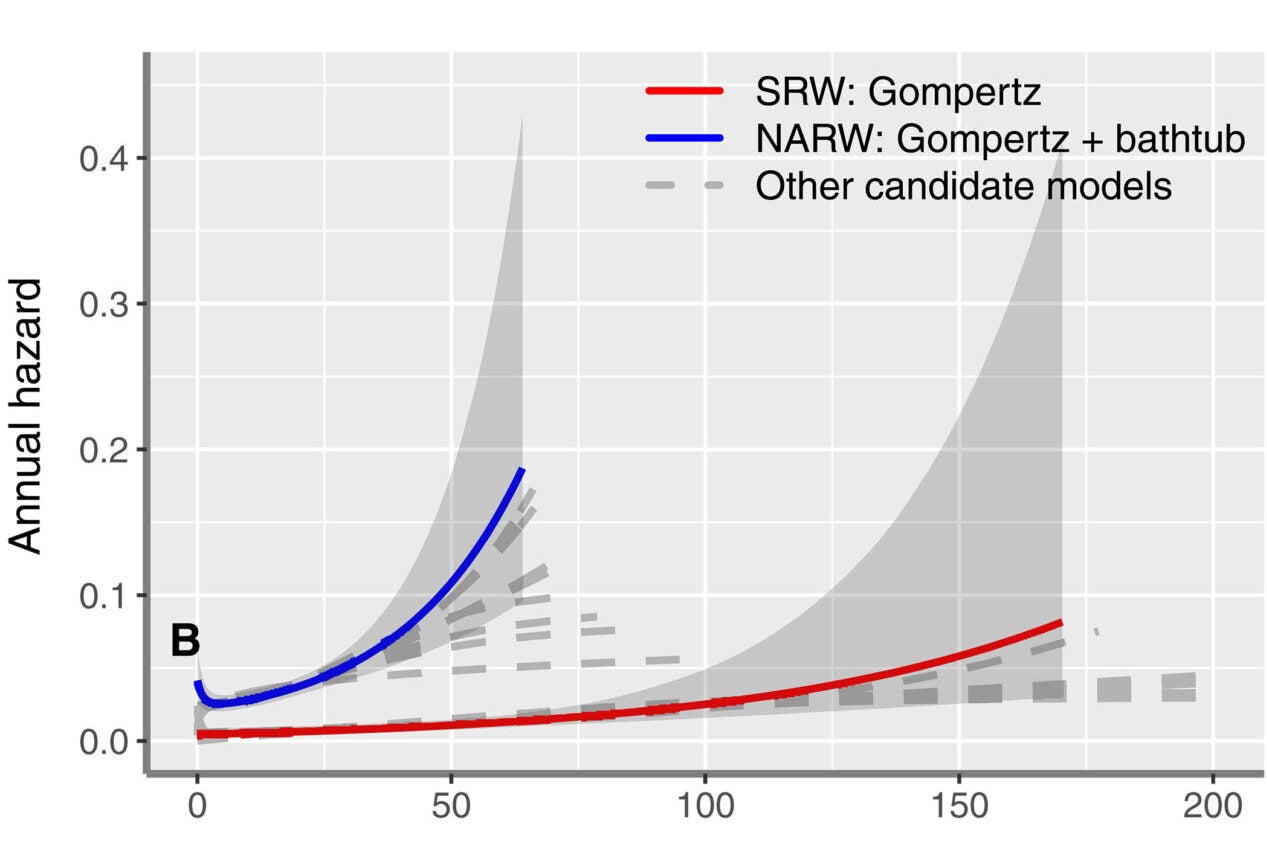Whales have long fascinated scientists and the public alike, with their immense size and graceful movements. Recent studies reveal a hidden aspect of their biology: their remarkable longevity. These findings, based on advanced research techniques and historical evidence, challenge long-held assumptions about their lifespans and provide new insights into their survival and conservation.
Historically, the longevity of whales was first documented through the analysis of ear plug lamina, annual growth layers found in fin and blue whales. Japanese whalers in the mid-20th century discovered that while most individuals exhibited fewer than 20 layers, some specimens had over 100, marking ages of 110 and 114 years.
This data established these species as the longest-lived nonhuman mammals at the time. However, more recent discoveries in bowhead whales have shattered these records.
Artifacts embedded in bowhead whales’ blubber during Indigenous subsistence hunts provided the first hints of their extraordinary ages. Some harpoon points, dating back to the 1880s, were found in whales hunted over a century later. A 2007 discovery of a Yankee whaler’s harpoon tip, last manufactured in 1885, suggested the whale had lived at least 130 years.

This hypothesis was validated using aspartic acid racemization (AAR) methods, which estimated the ages of several bowheads to exceed 150 years. One individual’s age was even determined to be 211 years, a figure corroborated by archaeological evidence.
Such exceptional lifespans align with physiological scaling principles. Larger animals generally live longer, and whales are the largest creatures on Earth.
For terrestrial mammals, the relationship between body mass and longevity predicts lifespans of 110 to 114 years for blue and fin whales. Bowhead whales, however, far exceed these expectations, highlighting a potential gap in our understanding of whale aging processes.
Determining accurate age estimates for whales poses significant challenges. While some species have tissues with countable growth layers, these become less reliable in older individuals due to tissue remodeling or wear. Consequently, ages derived from such methods often represent minimum estimates. Furthermore, the legacy of industrial whaling complicates matters.
Related Stories
Whaling’s peak reduced many populations to less than 10% of their original size, leaving few old individuals today. For a whale to survive to 150 years now, it would have endured decades of intense hunting, making such cases exceedingly rare.
Most aging techniques, including those requiring lethal sampling, emerged late in the whaling era. Ear plug lamination, discovered in the 1950s, provided age data only from hunted whales. This skewed dataset reflects a demographic snapshot from the end of industrial whaling, rather than a true representation of whale longevity.
While stranded whales occasionally offer age data, their utility is limited due to the rapid decay of tissues and the anthropogenic causes of their deaths.
As whale populations recover, individuals born post-1965 dominate, making it challenging to detect extremely old whales. Researchers hypothesize that the current life span estimates for baleen whales are significantly underestimated.

A study, published in the journal, Science Advances, analyzing mark-recapture data from North Atlantic and southern right whales supports this theory. This method, which tracks the disappearance rates of marked individuals, avoids reliance on direct aging techniques and instead models survival probabilities to infer longevity.
Results from the study reveal striking differences between the two species. Southern right whales, previously thought to live 70-80 years, show median lifespans of 74 years, with over 10% exceeding 130 years. Some individuals likely reach 150 years.
Conversely, North Atlantic right whales exhibit much shorter lifespans, with a median of just 22 years and few surviving beyond 50. These disparities are attributed to human impacts, including entanglements, ship strikes, and environmental changes.
According to Greg Breed, a marine mammal researcher and lead author of the study, human activities have significantly shortened the lives of North Atlantic right whales. “Their unusually short lifespans aren’t due to biology. They’re frequently tangled in fishing gear or struck by ships, and they suffer from starvation linked to environmental changes,” he explained.

Breed emphasized the importance of understanding whale lifespans for conservation, noting that recovery of healthy populations with older individuals could take centuries. “Animals that live to be 100 or 150 and only give birth every 10 years require slow and sustained recovery efforts,” he said.
Breed’s research highlights the cultural knowledge passed among whale populations, crucial for survival. Older whales teach younger ones vital survival skills, such as migration routes and feeding strategies.
The loss of older individuals disrupts this knowledge transfer, impacting population resilience. Recognizing the role of these cultural behaviors underscores the need for protecting long-lived individuals within whale populations.
The study’s implications extend beyond biology. It challenges assumptions about whale longevity, suggesting that species currently believed to live around 80 years may actually reach much older ages. This revelation has profound consequences for understanding whale biology and implementing effective conservation strategies.
“We’re not just recovering biomass,” Breed stated. “We’re recovering a dynamic system of cultural and behavioral knowledge essential for the species’ survival.”
Future research aims to explore longevity in other whale species and assess the lasting impacts of industrial whaling. By refining aging methods and expanding mark-recapture studies, scientists hope to uncover a fuller picture of whales’ lifespans and their ecological roles.
The findings from southern and North Atlantic right whales represent a crucial step in this journey, reshaping our understanding of these remarkable creatures and their place in the natural world.
Note: Materials provided above by The Brighter Side of News. Content may be edited for style and length.
Like these kind of feel good stories? Get The Brighter Side of News’ newsletter.
The post Whales can live substantially longer than humans appeared first on The Brighter Side of News.